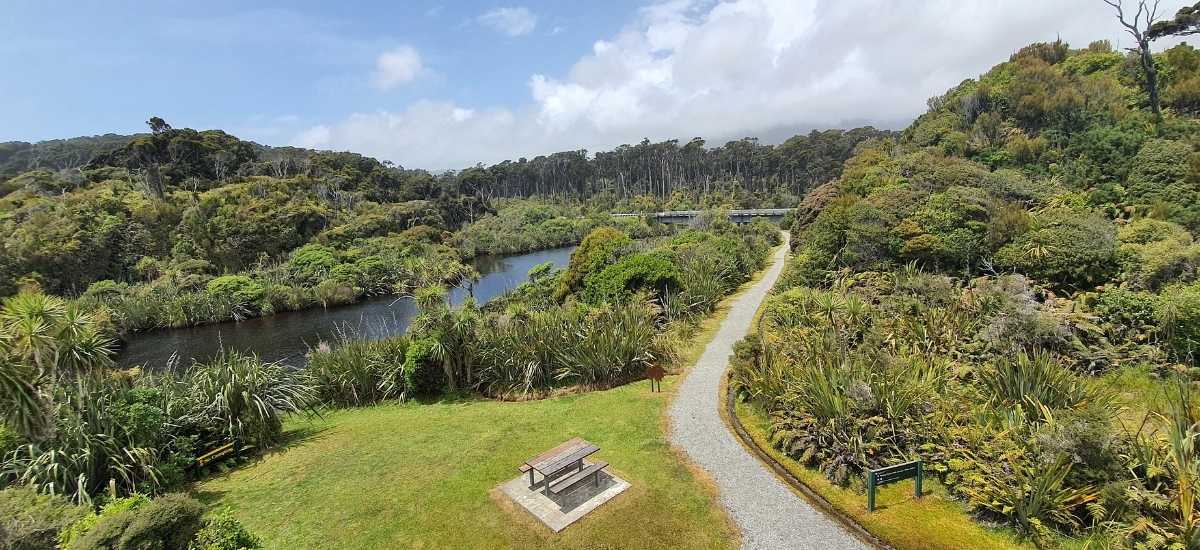Home » South Island » West Coast » Haast » Kahikatea Swamp Forest Walk at Ship Creek
A viewpoint next to the creek allows you a good look at the forest plants and wildlife. The track loops through an area of dense swamp forest where you can see stunning specimens of New Zealand’s tallest tree, the Kahikatea also known as White Pine.
At the beginning of the walk, you’ll enter a covered seating area with a lookout tower. Walk to the top of the tower for awesome views out to the coast and beach. Follow the two-way track which branches into a small loop at the end before you double back the same way.
I also did the other walk here called Dune Lake Walk, which started at the same place.






In addition to the drama of the coast, a peek into a remnant kahikatea Forest is well worth wild. Appearing to “walk on water”, these trees interlock their roots to help keep upright in the boggy conditions.
A boardwalk follows tranquil Ship Creek inland giving you a close encounter with a swamp forest and New Zealand’s tallest trees. Along the way, the story of their ecology and destruction is interpreted through sculpture imagery and script.





The dark tea stained creek you followed inland is typical of the hundreds of creeks that drain the West Coasts Lowlands. Ship Creeks black inky colour is a result of tannin and humic acid leaching into the water from the decaying vegetation of the swamp plans harnessed by high rainfall.
The saturated soils beneath the Kahikatea forest are high fertility areas constantly absorbing and recycling nutritions. Across the creek, however, the forest is quite different, with tall Rimu Forest settling on the better drained but less fertile soils of the slightly higher ridges.
Ship Creek is edged with rata, cabbage tree, flax & Kowhai, whose golden yellow flowers reflect in the blacken waters in spring. This coincides with the migration of a number of native freshwater fish species navigating their way upstream from the sea. In particular, the delicate juvenile whitebait is one of the five species keenly sort by whitebaiters who flock to rivers with their nets during this time. Those having avoided the net can reach around 100 mm in size but only survive for one year.
FREE Auckland Walks eBook
Subscribe for walking and hiking tips.

Walking Day Pack made in New Zealand